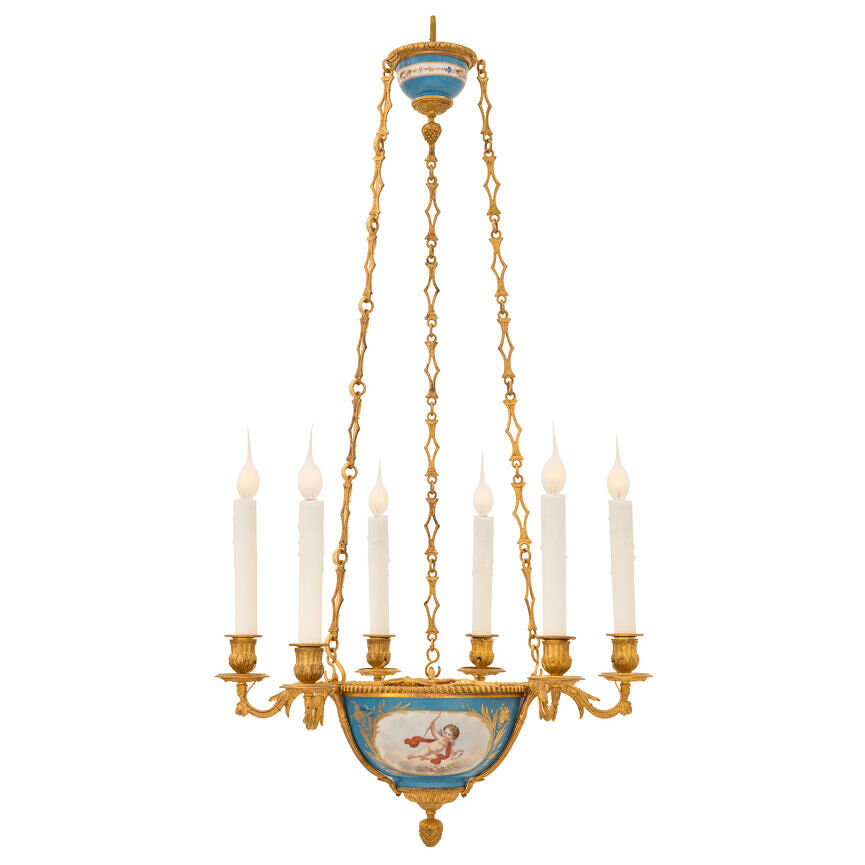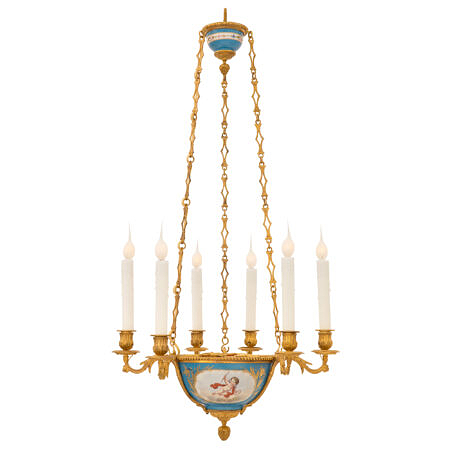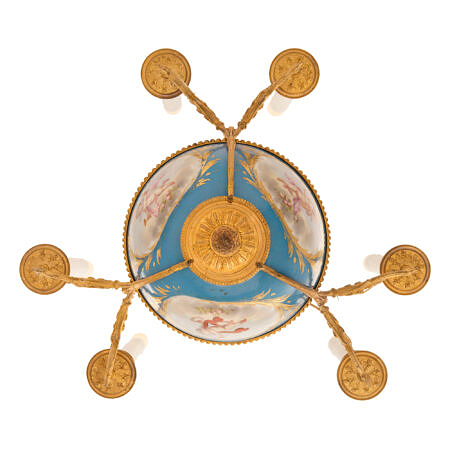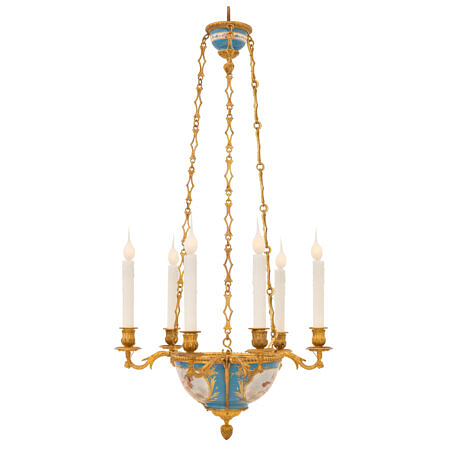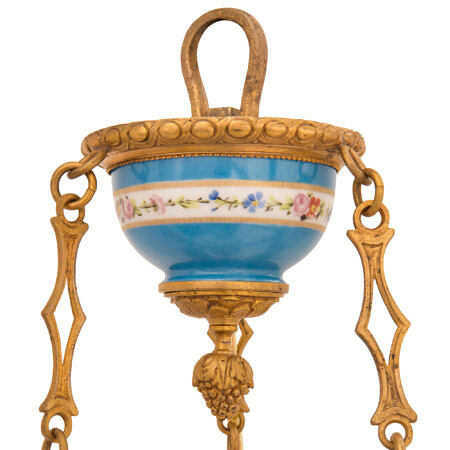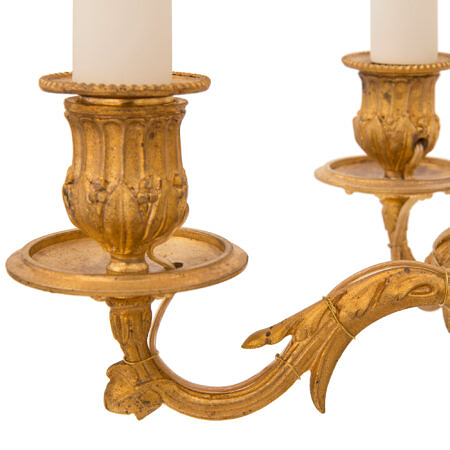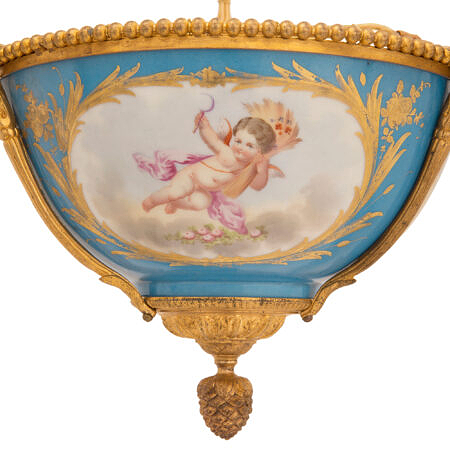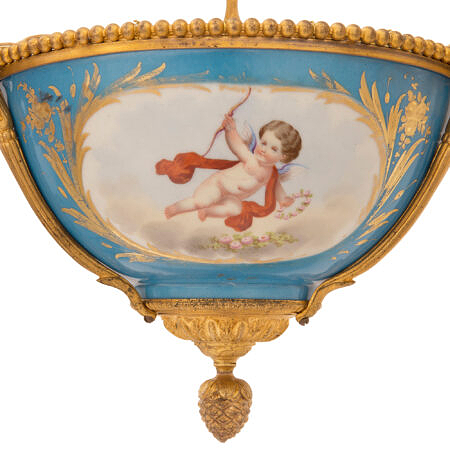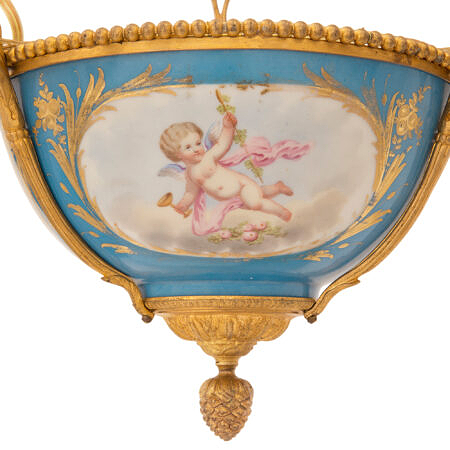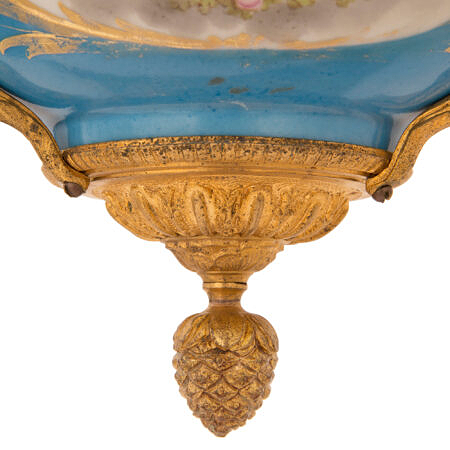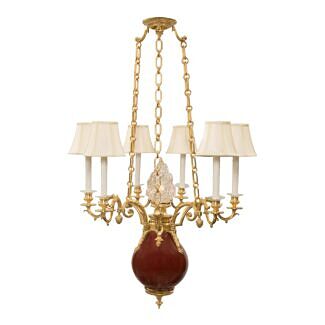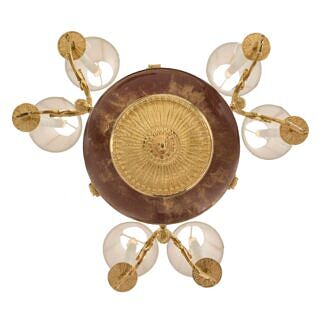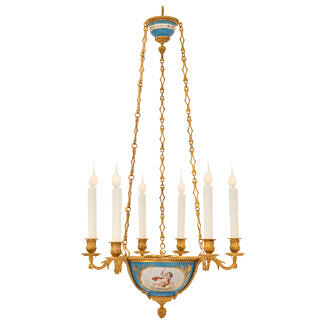A French 19th century Louis XVI st. ormolu and Sèvres porcelain chandelier
List: $14,800.00
A very elegant and most decorative French 19th century Louis XVI st. ormolu and Sèvres porcelain chandelier. The six light chandelier is centered by a fine bottom acorn finial amidst lovely foliate designs. The beautiful Sévres porcelain body displays three... — Read More
A very elegant and most decorative French 19th century Louis XVI st. ormolu and Sèvres porcelain chandelier. The six light chandelier is centered by a fine bottom acorn finial amidst lovely foliate designs. The beautiful Sévres porcelain body displays three most charming and wonderfully executed scenes of playful finely detailed hand painted winged cherubs. One is holding a staff and coupe, another holds a sickle and the other a bow and fine floral wreath. Three fine foliate ormolu movements encase the body and lead upwards to three pairs of arms each adorned with elegant acanthus leaves and fine foliate candle cups. Three delicate and uniquely designed chains lead upwards to the Sèvres porcelain canopy with lovely hand painted flowers, a striking ormolu acorn finial and wrap around band. All original gilt throughout. — Read Less
Shades, Canopies and Chain shown for display purposes, sold separately.
- Item # 5382
-
H: 38 in L: 19.5 in D: 19.5 in
H: 97 cm L: 50 cm D: 50 cm
- France
- 19th Century
- Ormolu, Porcelain
- Louis XVI st. Read More
- Sèvres Read More
It was founded through the support of King Louis XV of France and at the initiative of Madame Pompadour to be located near her Château.
Due to Sèvres’ reputation for excellence and prestige, it has always attracted some of the best artists throughout history; François Boucher, Albert-Ernest Carrier-Belleuse, Étienne Maurice Falconet, Alexandre Fragonard and August Rodin, just to name a few. Many of these artworks can be seen at the Louvre Museum and the Musée National de Céramique in France.
Initially, Sèvres created a soft paste porcelain know as Biscuit de Sèvres. In 1768 the Bordeaux chemist Villaris and Jean Baptiste Darnet discovered deposits of Kaolin on French soil. In 1771 the Royal Academy sent a report on the creation of hard paste porcelain at which time Sèvres began manufacturing hard paste porcelain.
Louis-Simon Boizot (1743–1809) was a French sculptor renowned for creating Biscuit de Sèvres models, and was the director at Sèvres from 1774-1800, followed by Alexandre Brogniart(1800-1847) and Henri Victor Regnault in 1854.
Related products
-
# 10704 - H: 47" D: 30"


